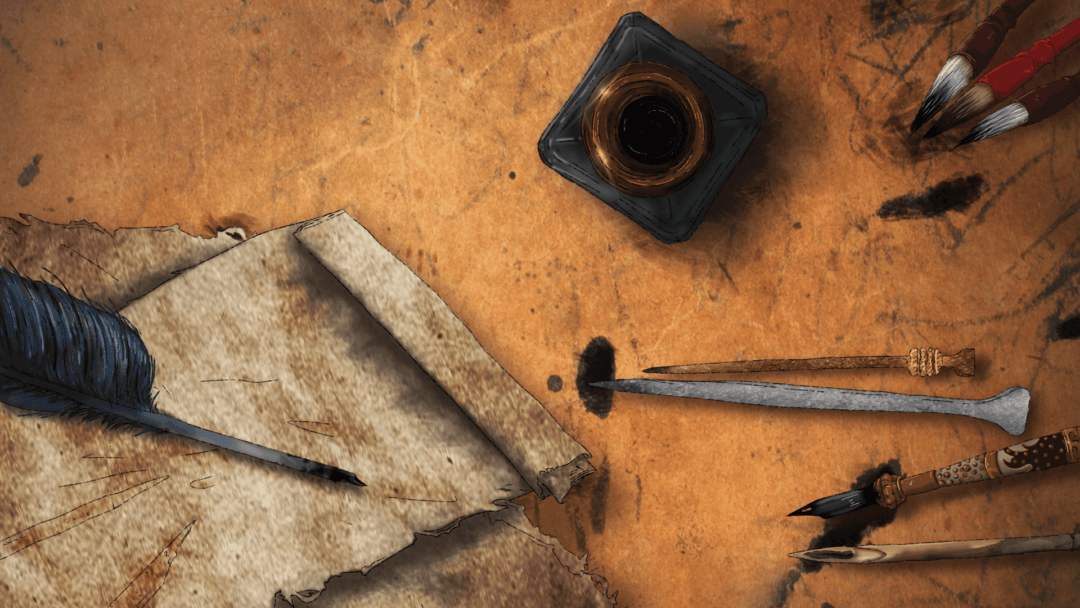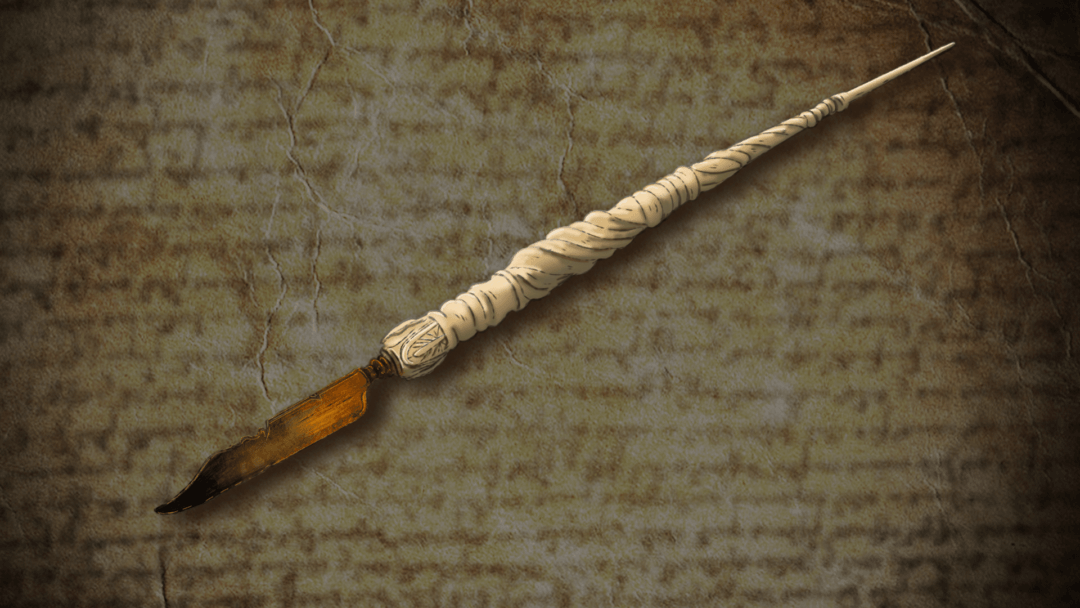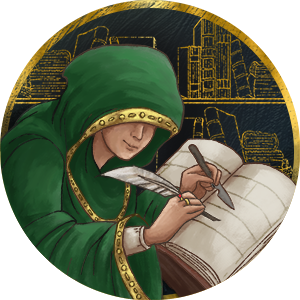
Greetings Age of Empires community,
I have come to you today with my first official piece as a contributor to the Age website. As I mentioned in my previous letter, I tend to write with more rudimentary instruments which you may have heard of before, unlike the fancy machines the rest of my team uses daily. This notable difference has inspired me to create a codex of all the diverse types of writing instruments from medieval civilizations across the world. Before the team heads out for the holidays, I want to share a few pages of information on medieval European scribes and their tools.
The Quill
Made of bird feathers, specifically geese, this instrument was the equivalent of a modern-day pen. Scribes in medieval Europe used these light-as-a-feather (literally) tools by dipping its end into their inkwells and then tracing letters, numbers, images, music, and more, on parchment paper. An essential part of effectively using a quill was the meticulous preparation of the tool. Scribes would have to carefully cut the hollow shafts of the feather at an angle or create slits through the bottom so a smooth and even distribution of ink could land on the paper. Some scribes would trim the top the plumes to avoid the annoyance of the tickle under their nose.
The Ink
One of the most essential parts of the writing process is the ink. Scribes needed a perfectly concocted ink to ensure their words would successfully stay on their canvas. Their ink needed to be dark enough to be easily seen on paper, not too runny or thick, and it needed to be compatible with the parchment to avoid deteriorating the thin and sensitive material. One of the most commonly used inks (but not the first) was the iron-gall ink. By crushing oak galls and adding ferrous sulphate and gum arabica, this long-lasting ink would be formulated and later placed into an inkwell to hold and store.
The Inkwell
The process of preparing this precious ink took a high degree of skill and time hence why it was necessary to have a safe and durable container to store it. Medieval craftsmen, known as medieval horners, specialized in creating inkwells out of cow horns. These inkwells were shaped to fit on a small, hollow holder of a scribe’s desk but could also be made in smaller sizes with a screw-on lid for traveling scribes. Most of these ink vessels were plain, with little to no decoration or customization but if a scribe was lucky enough to be well known in the profession, they could afford to customize the cow horn vessel with engravings and designs.

The Parchment
Without parchment, there would be no canvas for the art of a wordsmith. In early medieval times, scribes used papyrus paper as their blank canvas when writing and transcribing. Eventually, parchment paper became much more popular as it proved to be not only more durable, but much smoother to write on compared to papyrus. Parchment was made by putting sheep skin and calf skin through an extensive process to achieve the final product. Some of the steps included soaking the material in a lime solution for about ten days and rinsed with water. Next it was dried and stretched on a tall frame, scrapped, and rinsed once again to smooth out the material. Once it reached the final stages of preparation chalk would be thrown on the parchment to help with the smoothing of the material and to make sure ink would not bleed while the scribe was working.
The Standing Desk
Standing desks became an essential part of a scribe’s work area as it was where most would spend all their daylight hours (and sometimes candle-light hours). A scribe’s desk is different from what we are familiar with. The desks were tall, podium looking stands famously named “standing desks”. The area where a wordsmith would place their paper and writing instruments was at a slanted angle and high enough for its user to stand while working. Working long hours at these desks was incredibly taxing on the bodies of scribes (trust me, I would know) as their posture was usually hunched over to properly see what they were working on. After all, making a mistake on parchment could be incredibly expensive.
The Penknife
Another essential tool for a scribe to have on hand was their penknife. Made from metal, this knife’s sharp edge was held in the scribe’s non dominant hand and used to scrape off the ink from the parchment when mistakes or minor spills were made.
The Travel Belt
A scribe’s travel belt was an essential part of their repertoire for those who did not have a set monastery or workspace. Writing was their career and without a dedicated space, they had to be prepared to work at any time. The belt had enough space to hold their travel inkwell and a case which held their quills and penknife.
As the next few weeks go by, pages will flip and I will continue travel to gather the history of scribes and their tools from across the world. The instruments and methods I presented to you today represent only a small portion of the plethora of instruments which bring a beautiful set of symbols to life and I cannot wait to share more with you.
I am thrilled for our next meeting.
Until next time,
Sage

As told by Grace Rojas